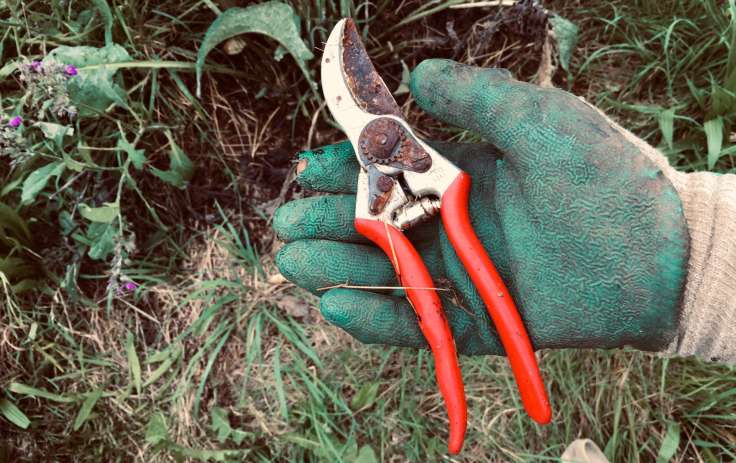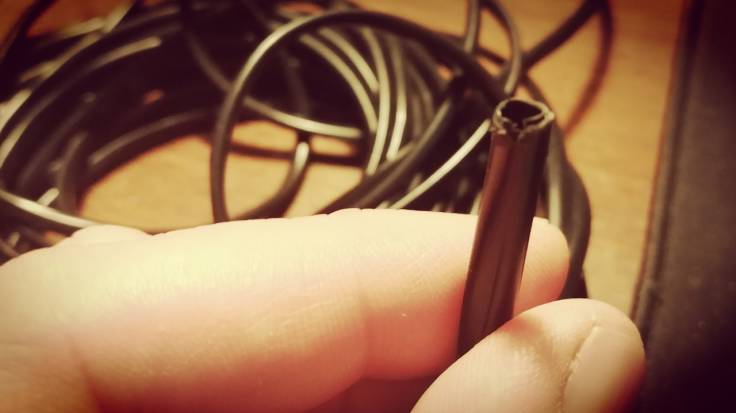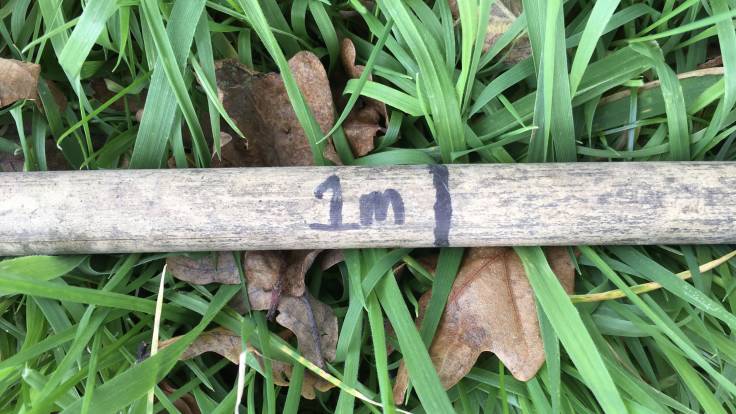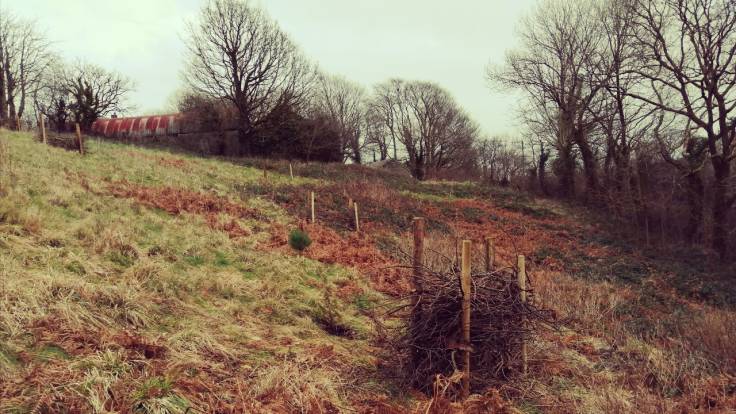
My trusty, rusty Felco secateurs, which I lost for 6 months in a bush
These are my most favourite tools, really here for my own reference!
Most used & favourite
- Felco 2 secateurs with Housolution polyurethane sheath
- Silky F180 folding saw, with replaceable blade
- Niwaki hori-hori knife & canvas sheath
- Showa 350R 10/XL gloves
- Spear & Jackson solid socket tree spade
Wishlist
- Silky Zubat 330 with belt clip scabbard
- Niwaki GR Pro secateurs — I like Felco secateurs as they’re easy to take apart and maintain, but I don’t like the latch by the blades, much prefer a latch at the bottom of the handles like on the Niwaki secateurs.
Supplies

Tying tube for tying trees to stakes
- 4mm black tying tube for tying dwarf rootstock fruit trees to stakes
- Cotton butchers’ twine
Rudimentary

Local bamboo for local bamboo canes
- Path marking — 50cm bamboo canes combined with cotton butchers’ twine are ideal, because they’re easy to adjust and tighten, and they’re compostable. If you have access to make your own bamboo canes from a local clump, even better, because they are local, free and also will compost down even quicker.
- Tree diameter — to quickly calculate the projected diameter of trees, I use a 2 metre bamboo cane, marked at half metre intervals with black gaffa tape. You can see how far an 8m diameter tree extends very easily.
- Hedge spacing — for the line of the hedge, use bamboo cane to measure from a fixed point, eg the edge of a path, allowing for the final diameter of the hedging plant. It’s good to plant about 0.5m apart, depending on species, budget etc. Mark 0.5m on the bamboo cane.
- Tree marking — bamboo cane & dead hedge. If you can see your trees easily because they have a dead hedge in front of them, you can make your way to look after them more easily too.

A simple 2m length of bamboo is very useful to quickly measure tree diameter

Measuring a fixed width from the fixed edge of the path, then measure 0.5m gap between hedging plants

You can easily spot where the trees are by the dead hedges